Kwiambal National Park is on Kamilleroi Country. I acknowledge the Traditional Custodians of this area and their deep and ongoing connection to Country, and pay my respects to their Elders past and present.
Kwiambal (= Ki-am-ble) is a relatively small national park in northern country New South Wales.
With a granite gorge, small waterfalls and two wide rivers running through the national park, Kwiambal is the kind of place where you could easily hang out for a week or two. The river setting is just stunning, and whilst I’m no water baby, even I went for frequent paddles in the beautiful, clear Severn River.
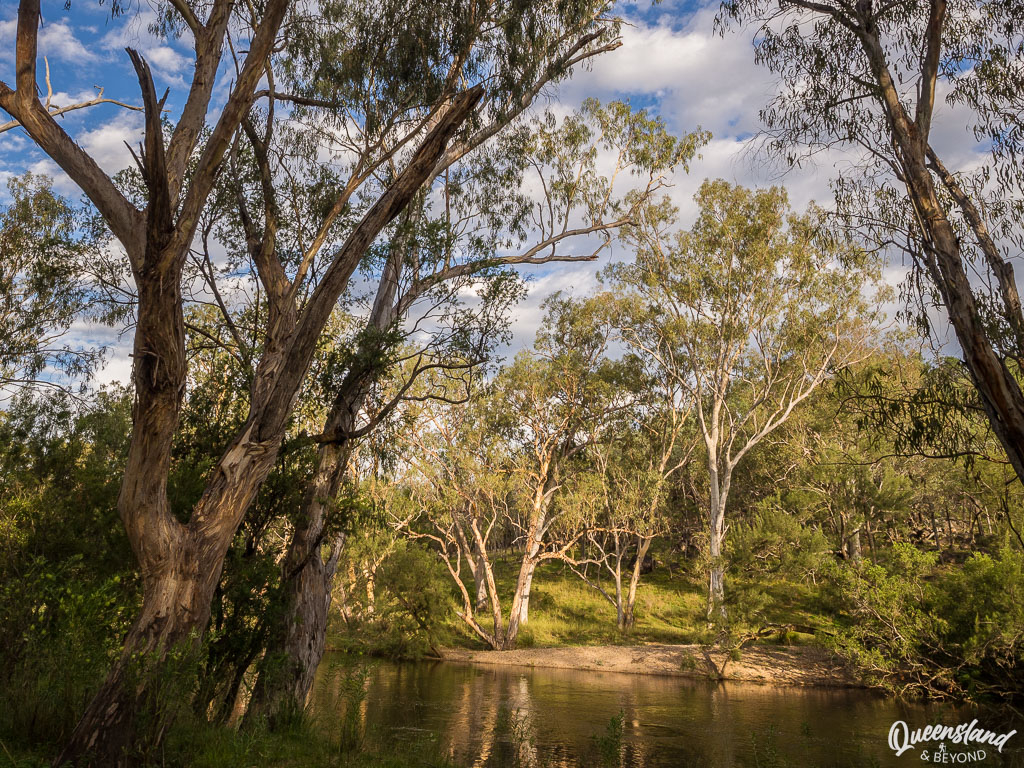
We stumbled upon this little piece of heaven one very hot January day, and ended up staying for a couple of nights (back in the days when you didn’t have to pre-book anything).
KWIAMBAL NATIONAL PARK: TIPS FOR YOUR FIRST VISIT
Located about 70km north of Inverell, Kwiambal National Park is perfect if you want to relax for a few days while also doing some short walks.
And it’s the perfect setting for summer swims and paddling on the river.
BEST TIME TO VISIT KWIAMBAL RIVER NATIONAL PARK
Although further inland, Kwiambal isn’t so far west in country NSW that it’s completely unbearable to visit over summer. It can be hot (mid-30°Cs and above) but with rock pools and the wide Severn River running through the park, you always have an opportunity to cool down.
When we camped at Kwiambal in early January, it was hot, hot, hot (35-40°C). Even the nights were seriously warm. And while we did go on a short walk, we mostly just hung around the campsite and went for dips in the cool river.
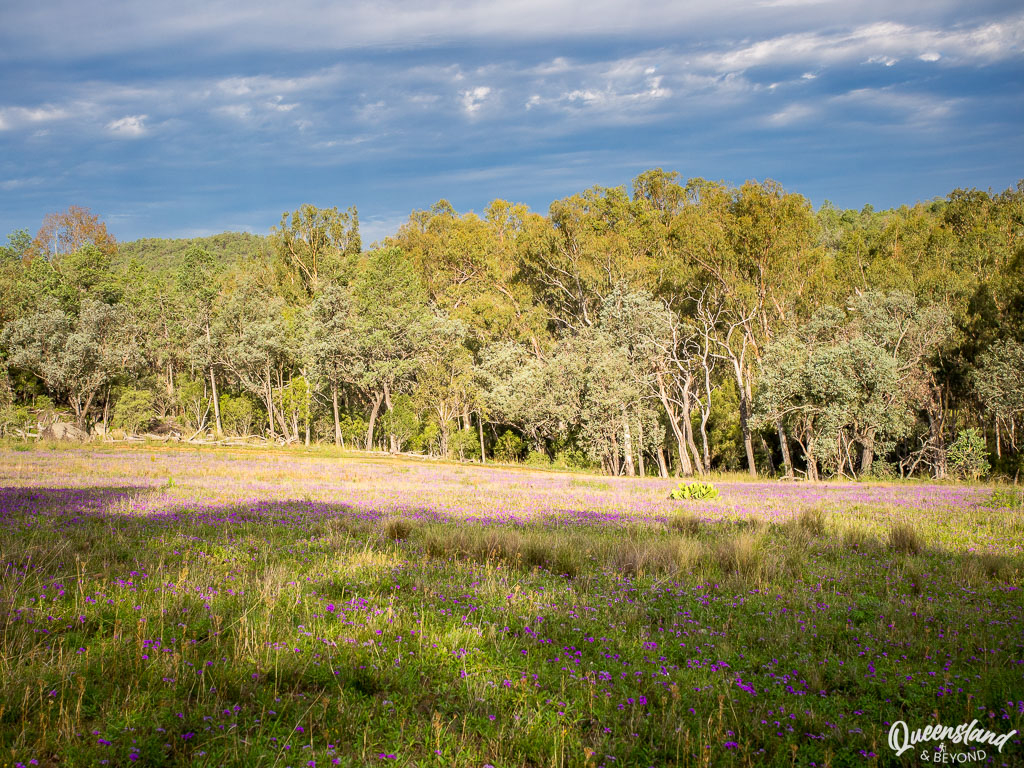
In winter, it would be quite chilly (even down to negative temperatures overnight) and with more rain so you’ll probably have a really quiet camping experience if that’s what you’re after.
HOW TO GET TO KWIAMBAL NATIONAL PARK
Kwiambal National Park is in northern country NSW close-ish to the Queensland border. It’s about a 5-hour drive (~400km) southwest from Brisbane and, of course, a much longer drive from Sydney (8 hours, 660km).
We were coming from Torrington Conservation Park via Inverell and only had some rough information on how to get to Kwiambal (no phone reception at the time). But it’s not actually that hard to find.
We basically just followed the signs from Inverell, about a 1-1.5 hours drive.
If you’re coming from the north along the Bruxner Highway or Tenterfield, turn south at Bonshaw, and then follow the signs to Kwiambal from Ashford.
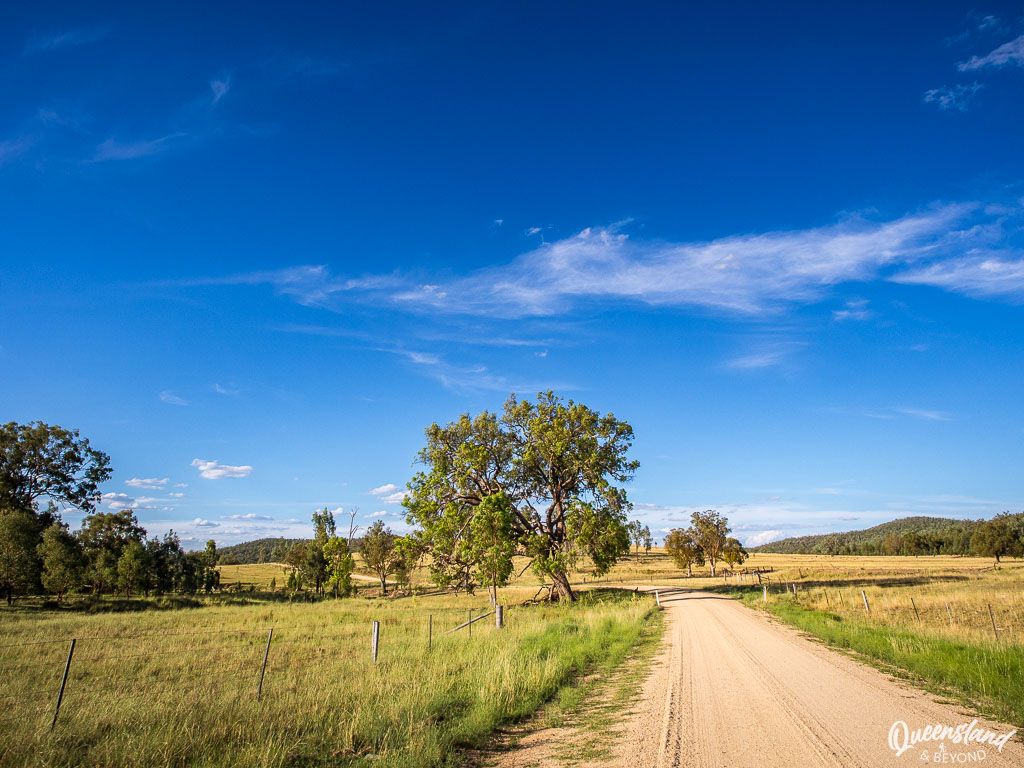
Kwiambal is 2WD-accessible but be aware if you’re in a conventional vehicle: There’s a fair bit of dirt road driving involved and parts of it might be somewhat sandy.
STAYING AT KWIAMBAL NATIONAL PARK
Camping is the obvious choice at Kwiambal, which means camping right next to the Severn River. Beautiful.
If you fancy a bed and hot showers, your other option is to book a stay at Lavender Vale Cottage, an old (refurbished) farm house that’s now bookable through NSW NPWS. For larger group bookings, you can even stay at the Lavender Vale Homestead (up to 20 people).
I love that NSW has made historic homesteads, cabins and cottages available all through their national parks.
WHAT TO DO AT KWIAMBAL RIVER NATIONAL PARK
Even at Christmas time, Kwiambal felt like a really relaxing camping spot. But there are also a few walks and lookouts to explore, not to mention rock pools and a stunning river gorge.
Here are a few things to do at Kwiambal National Park:
1. CAMP AT KWIAMBAL RIVER NATIONAL PARK
Camping here is just sublime, and with lots of space, you should be able to find your own special spot.
There are two camping areas at Kwiambal: Lemon Tree Flat campground and the slightly newer Kookabitta campground.
Both camping areas stretch along the Severn River but there are fewer opportunities to camp right beside your vehicle at Kookabitta.
The two camping areas are both large, open grassy areas with no marked sites. There are now 10 sites available at Lemon Tree Flat (including one really big group site) and 8 sites at Kookabitta.
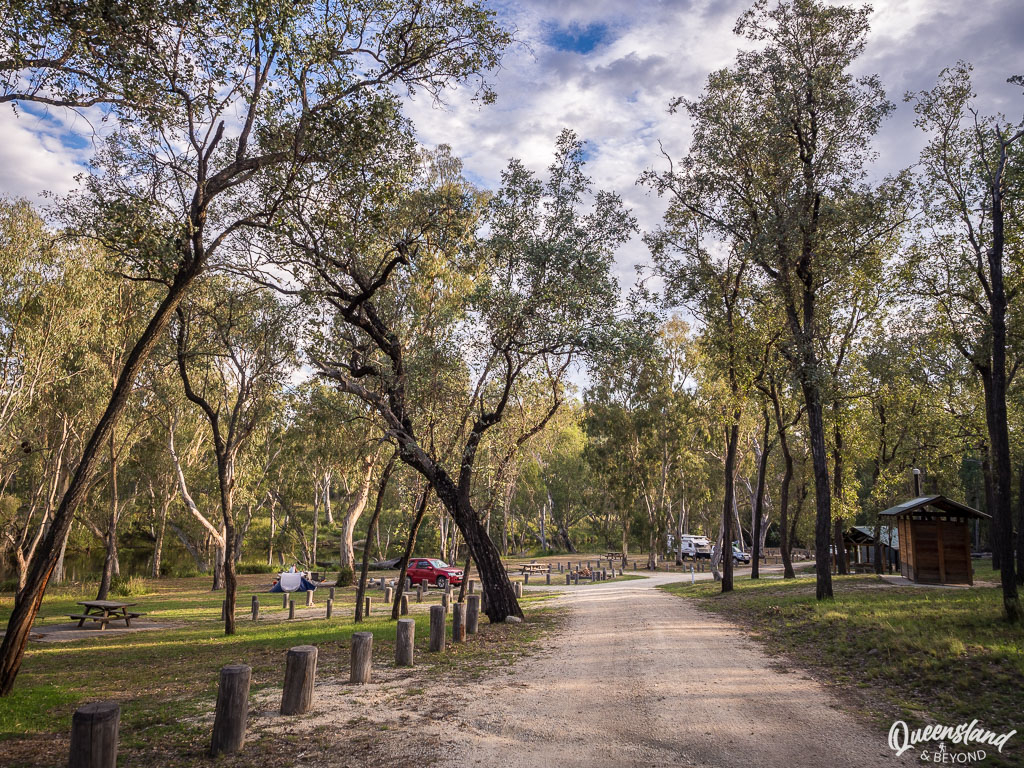
You need to pre-book your campsite at either of them now. Reception here is a bit patchy so don’t leave it until you’re actually in the park.
When we camped there, you didn’t have to book so there were no limitations on how many people could potentially squish into the whole camping area. There were rather a lot of people camped at Lemon Tree Flat.
KOOKABITTA VS LEMON TREE FLAT CAMPGROUNDS: MY THOUGHTS
I’m usually a fan of being able to set up camp next to our car but we ended up choosing Kookabitta, mostly due to the busyness and loud music vibes (some of) the campers at Lemon Tree Flat exuded.
If it’s quiet, either camping area would be lovely.
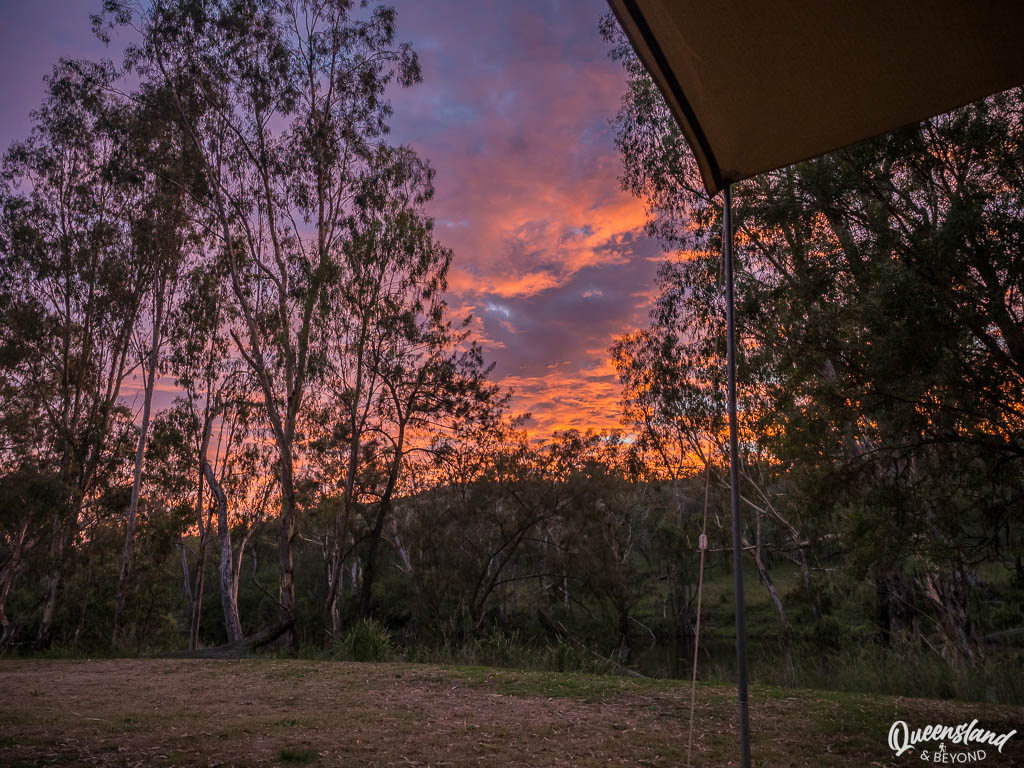
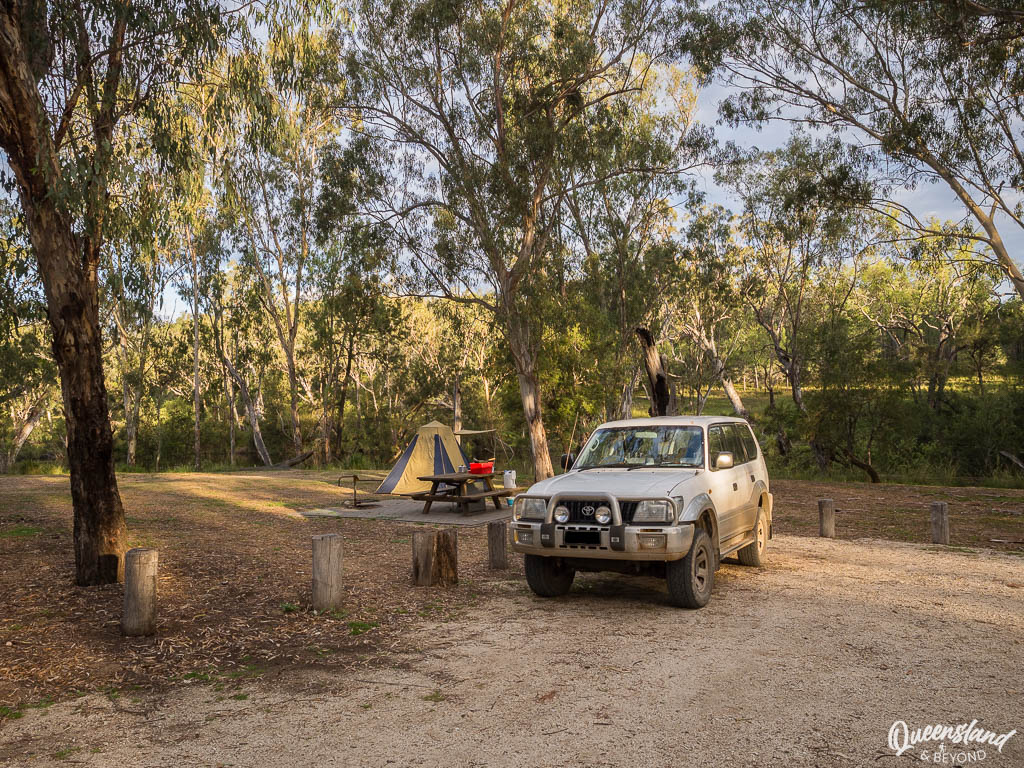
At Kookabitta, there are some picnic tables available (yay!), which always make camping life so much easier. I don’t remember seeing any at Lemon Tree Flat but the NSW NPWS website states they’re available so I must have just forgotten.
Lemon Tree Flat is the more popular spot; maybe because river access is a bit easier at this site. Even at the height of summer, we had tons of space to choose from at Kookabitta while Lemon Tree Flat was much more packed.
There are two (drop) toilets at Kookabitta and a pretty nice picnic shelter that some people actually hung out at, seeking some shade during the heat of the day.
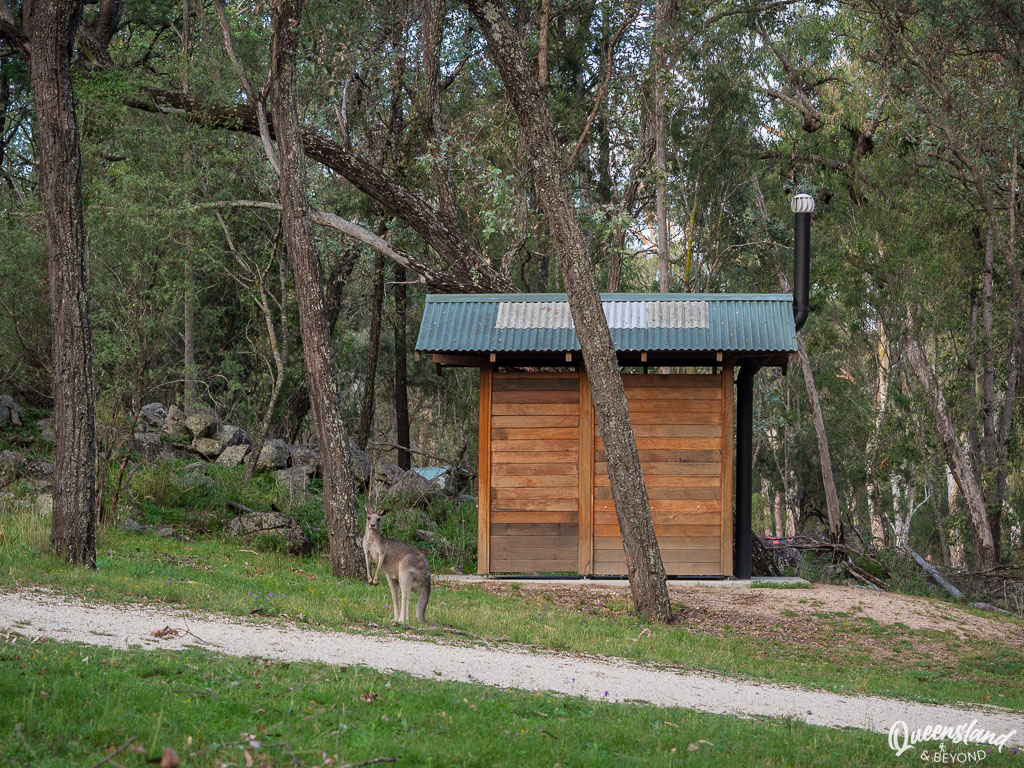
And despite what the information board in the park might say, there are no showers at Kookabitta. The NSW NPWS website also doesn’t mention any but I scoured the whole campground in search of them because of the sign and found nada.
KOOKABITTA CAMPING AREA AT A GLANCE
PROS: Gorgeous bush and river setting; some picnic tables available; accessible by 2WD (dry conditions); clean (drop) toilets; not hugely busy even at peak times
CONS: Can’t camp right next to your vehicle; not really suitable for caravans or camper trailers (best to camp at Lemon Tree Flat with that setup); some trees (but mostly gums) so not a huge amount of shade available; can get very hot in summer (35°C and higher)
COST: $12 per site/per night (2024); pre-bookings only
PERSONAL ENJOYMENT RATING: 4/5
Like in most national parks, there are no rubbish bins here so make sure you take all your rubbish home and dispose of it properly.
2. EXPLORE THE WALKS AND LOOKOUTS OVER THE GORGE
Kwiambal National Park is one of the few national parks that we didn’t fully explore when we camped there for a few days. It was simply too hot and I was very stressed about the heat (having landed in hospital with heat exhaustion only a few months prior) so I ended up mostly relaxing in our campsite and swimming in the river.
I’d like to return at some point and explore all the walks.
From the Macintyre Falls picnic area, you can access two lookouts, a short walk down to a plunge pool and a longer walk along the Macintyre River.
There’s another walk and lookout that you can hike to from Lemon Tree Flat campground.
1. MACINTYRE FALLS LOOKOUT (0.2KM RETURN)
BASIC TRAIL INFO
DISTANCE: 0.2km return
DIFFICULTY: Grade 2 (very easy)
TIME: 5 min
TRAILHEAD: Macintyre Falls picnic area
The lookout over Macintyre Falls offers sprawling views into the rocky gorge, the plunge pool and, of course, Macintyre Falls.
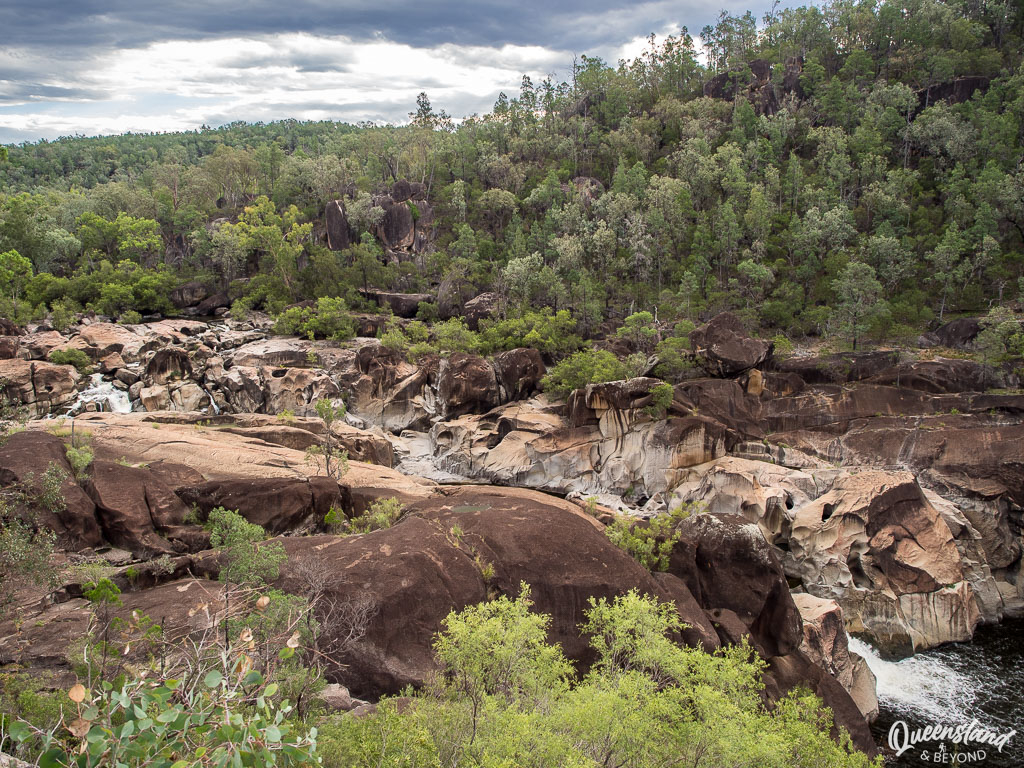
Depending on rainfall, the falls may be more or less rushing down into the rock pool and riverbed.
2. THE BEACH LOOKOUT (0.2KM RETURN)
BASIC TRAIL INFO
DISTANCE: 0.2km return
DIFFICULTY: Grade 1 (very easy)
TIME: 5 min
TRAILHEAD: Macintyre Falls picnic area / along Rock Pool Walking Track
The Beach Lookout is another very short walk. It’s only a couple of minutes along the Rock Pool Walking Track so if you’re not up for steps, just walk as far as the lookout.
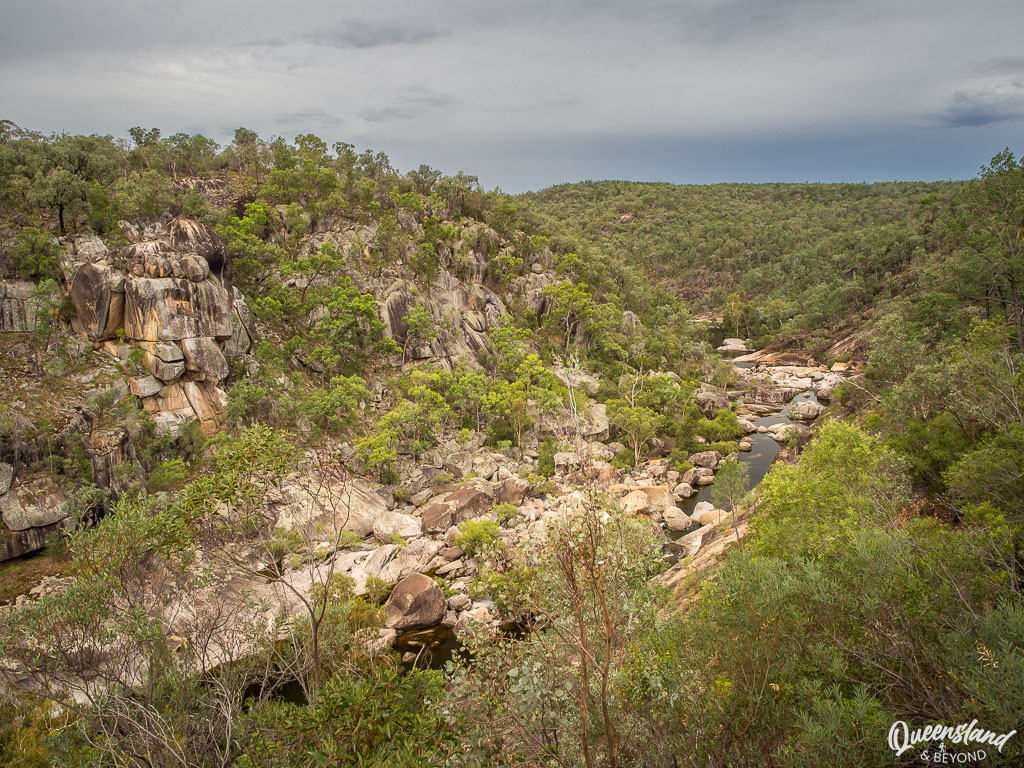
You’ll find some stunning views into the Macintyre River Gorge.
3. ROCK POOL WALKING TRACK (0.5KM RETURN)
BASIC TRAIL INFO
DISTANCE: 0.5km return
DIFFICULTY: Grade 3 (easy/moderate)
TIME: 0.5 hour
TRAILHEAD: Macintyre Falls picnic area
As the name suggests, the Rock Pool Walking Track takes you down to where the Macintyre River rushes into a large plunge pool. There are a few steps along the way but it’s not too steep.

You can swim here (if you can find a spot to safely get in) but the pool is surrounded by slippery granite rocks and not as easily accessible as you might hope.
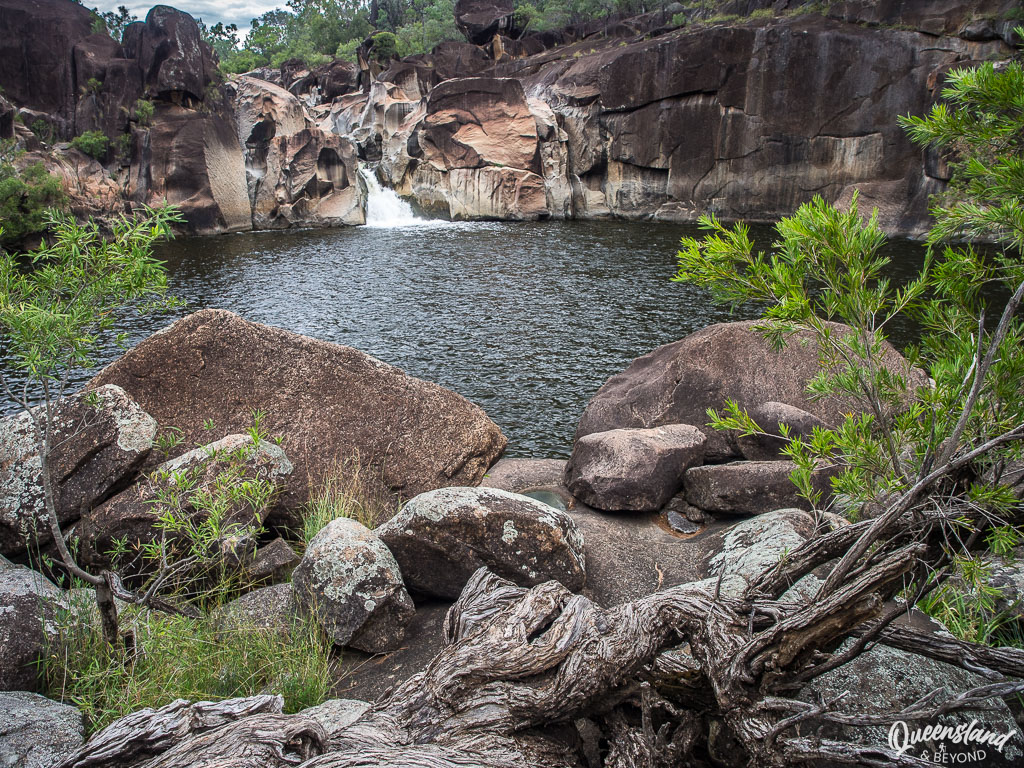
I must admit that I found the wide Severn River at the camping area much more inviting for a cool dip than the rock pool.
4. SLIPPERY ROCK WALKING TRACK (4KM RETURN)
BASIC TRAIL INFO
DISTANCE: 4km return
DIFFICULTY: Grade 4 (moderate)
TIME: 1.5-2 hours
TRAILHEAD: Macintyre Falls picnic area
Starting from the same day-use area, the Slippery Rock Walking Track heads east along the Macintyre River. It looks pretty spectacular and I’m a bit bummed that I wasn’t up for doing this walk.
5. THE JUNCTION (7KM RETURN)
BASIC TRAIL INFO
DISTANCE: 7km return
DIFFICULTY: Grade 4 (moderate)
TIME: 1.5-2.5 hours
TRAILHEAD: Lemon Tree Flat campground
The biggest walk at Kwiambal National Park starts at the western end of the Lemon Tree Flat campground.
It takes you out to where the Severn River and Macintyre River converge with apparently intermittent but stunning views of the river gorges and the junction.
About 1.7km along the track from the campground is The Dungeon, a “deep river gorge that becomes a churning tunnel of water after rainfall” (NSW NPWS). Sounds dramatic!
To be honest, the information on the NSW NPWS website is a bit unclear on this walk. I’m not sure whether it’s a circuit walk (on one of the maps it is), or whether the side trip to The Dungeon Lookout is 1km (according to the NSW NPWS website) or 100m (according to signs). ??
Very confusing… If you know, do let me know in the comments.
3. FLOAT DOWN THE SEVERN RIVER
In summer, Kwiambal National Park is picture perfect for river explorations. If you have a kayak or canoe, it’d be amazing to explore the Severn River right from your campsite.
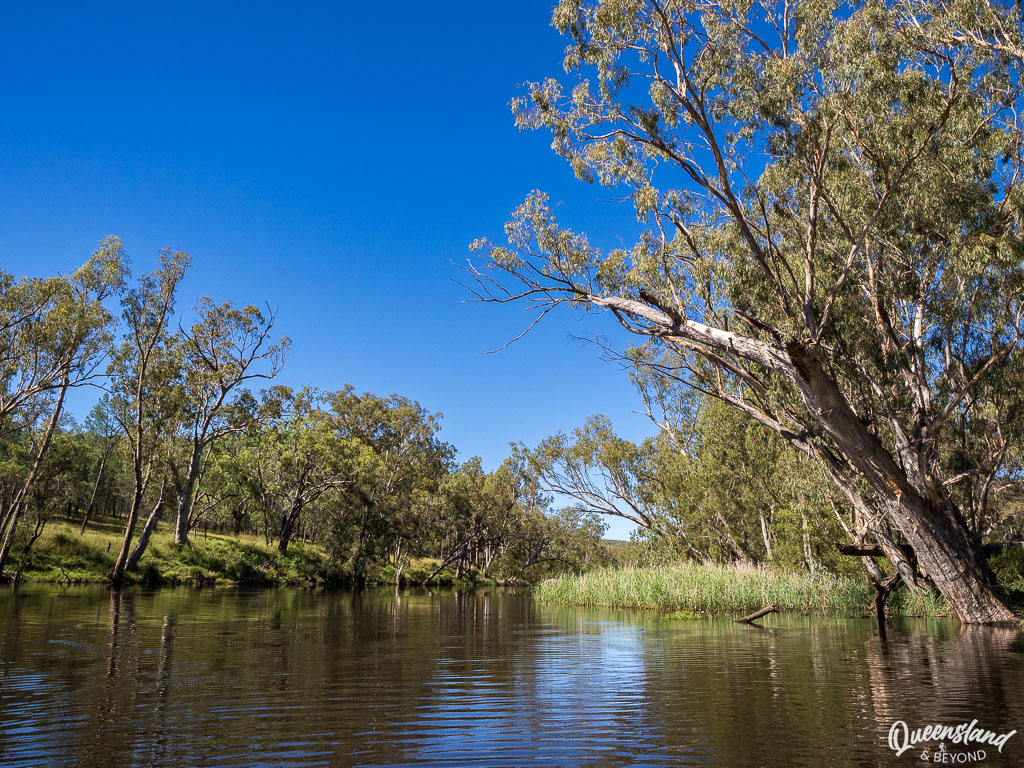
We didn’t have either but the current was calm yet strong enough to just float down the river from one end of the campground to the other. And repeat… 🙂
4. WATCH THE WILDLIFE
There’s plenty of wildlife around the camping areas, from kookaburras that’ll wake you up in the morning, kangaroos eating the grass, wallabies along the tracks to feral goats scampering past in a hurry.
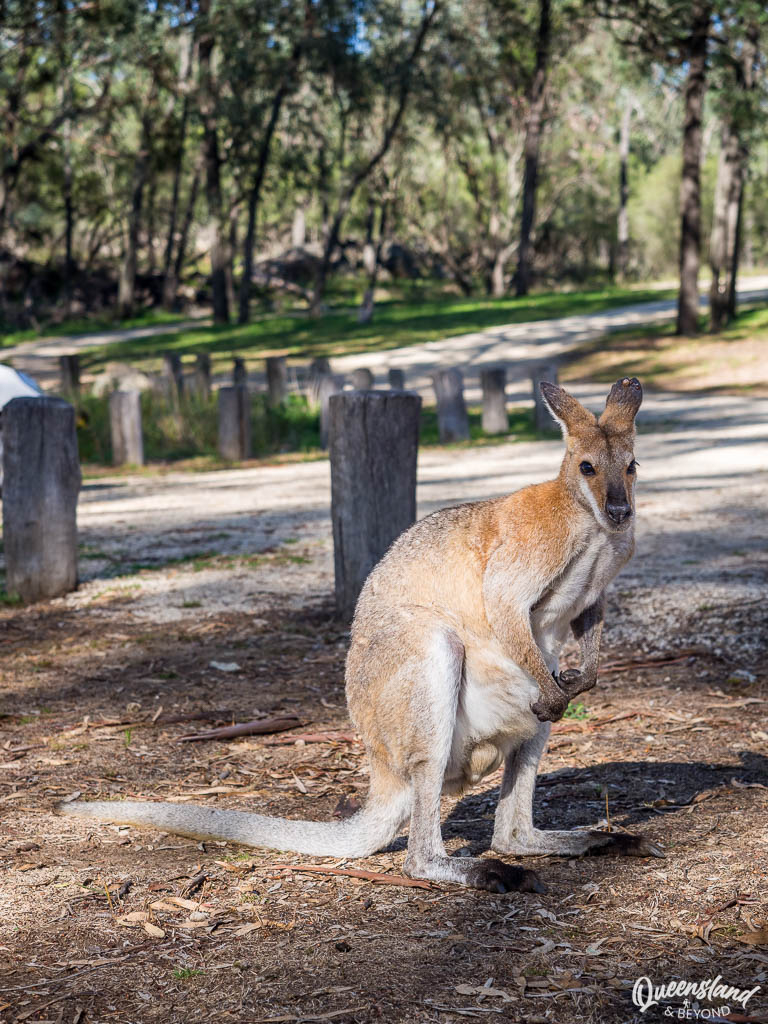
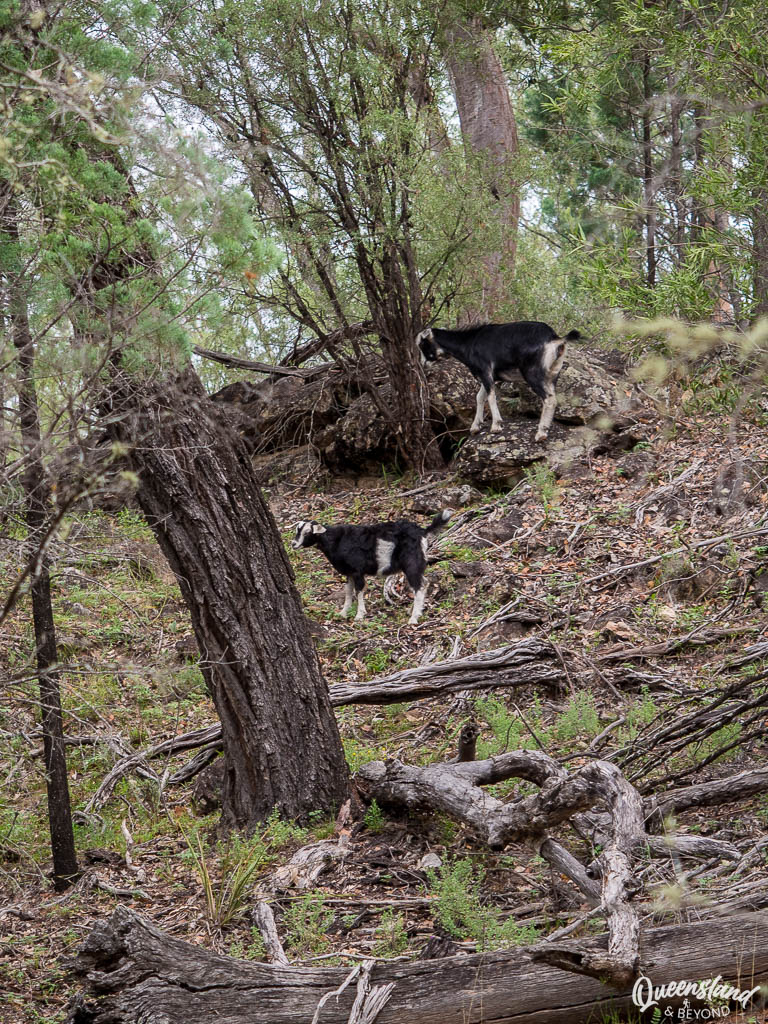
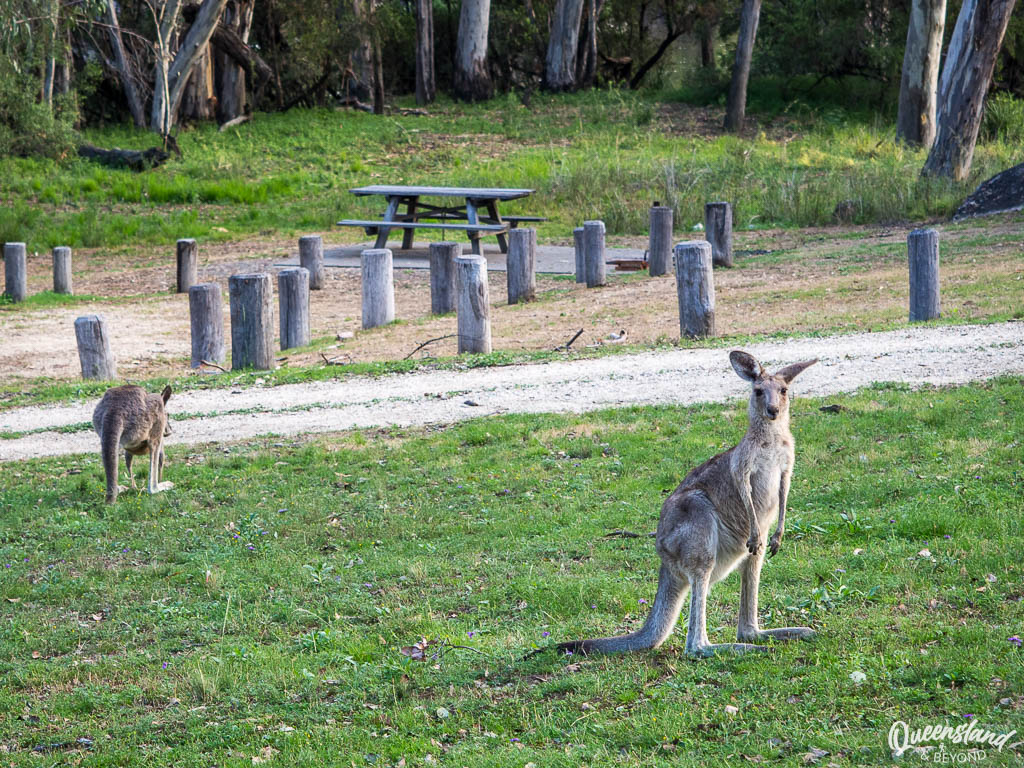
We spent a fair bit of time being entertained by gorgeous creatures (and less gorgeous feral goats) while sitting around doing, well, not much. 🙂
If you’re a birdwatcher, I’m sure you’ll catch plenty of little flighty creatures too.
5. CHECK OUT THE LIMESTONE CAVES {CLOSED}
Kwiambal is home to a microcosm of bats who live in the limestone caves (near the entrance of the park). This used to be mining cave system (phosphate rock) but now just houses microbats.
We only poked our head into the entrance of the cave and didn’t venture in too far. We were there in January (breeding season) and would have easily disturbed the bats. Visits were restricted to March-April and September-October.
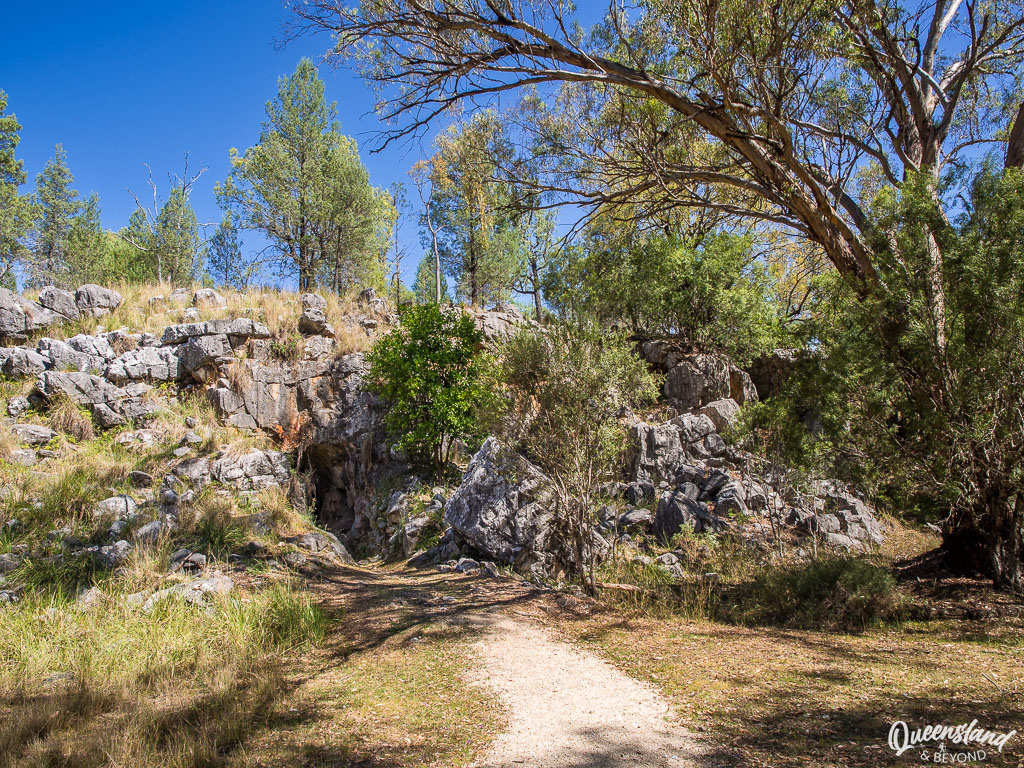
Unfortunately, the limestone caves remain closed for now as the bats are highly susceptible to lung disease.
FINAL THOUGHTS
Kwiambal National Park is a beautiful and serene spot for summer (or spring/autumn) camping and a bit of exploring. Once you’ve lived in Queensland for a while, you really appreciate the stunning rivers that NSW (and Victoria) offers.
Happy exploring,

MORE INFORMATION
Find more information on about Kwiambal National Park website, including current alerts or booking your camp spot at Lemon Tree Flat or Kookabitta campground.
MORE POSTS ON CAMPING IN NEW SOUTH WALES
Mulligans Campground at Gibraltar Range National Park is another spot with a river setting we just loved. Read my thoughts here. Bald Rock National Park doesn’t have the river setting but it does have giant granite boulders and sprawling views. Read more about camping at Bald Rock.
For a bit of a different spot, you could camp at Border Ranges National Park, and combine it with a scenic drive around this volcanic rim countryside.
LIKE IT? SAVE TO PINTEREST
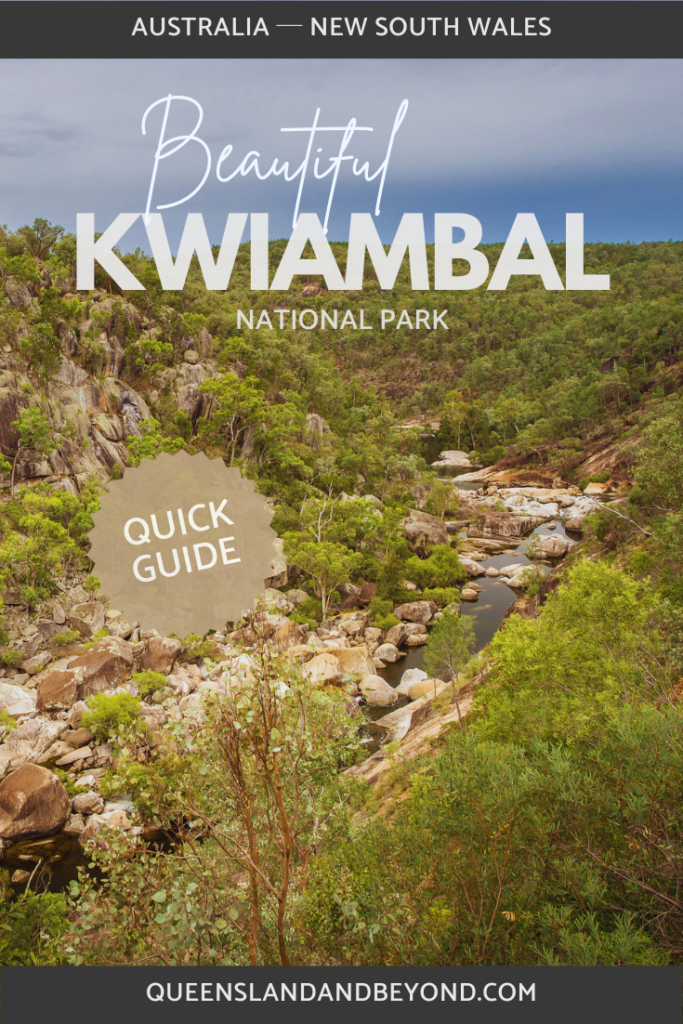
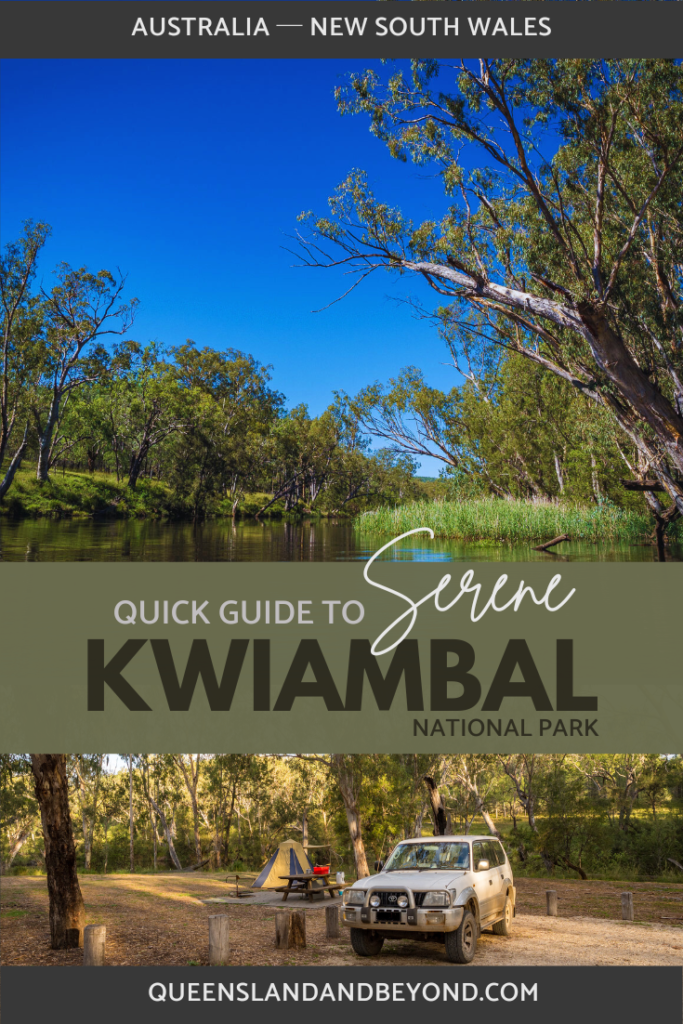

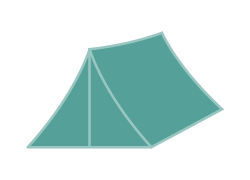
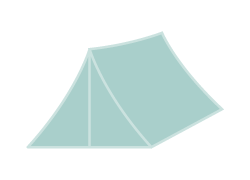


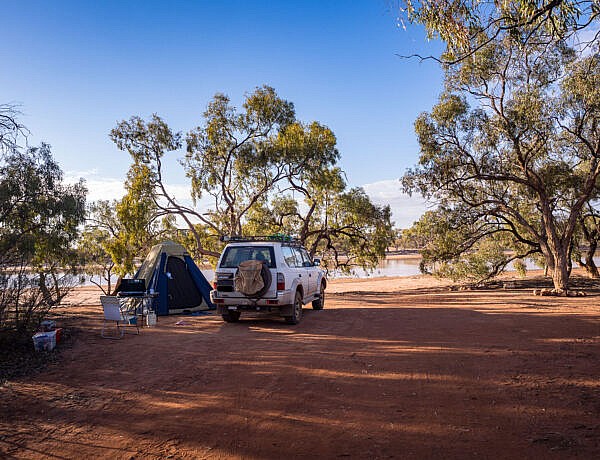

No Comments